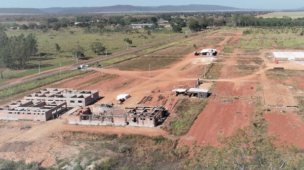Tempo de leitura: 1 minuto
New research by King’s academics Drs Charlotte Goodburn and Jan Knoerich shows how India was inspired by China’s Special Economic Zones (SEZs), and how local contextual factors – political, social and cultural – have affected the success of replicating the model.
The research examined the case of an Indian industrial city that was modelled on China’s economically successful SEZs. These SEZs had been developed in China from the 1980s to attract foreign direct investment and boost exports. They were dedicated to enabling business, with enhanced infrastructure and transport links, and with exceptions to national tax, labour and customs laws.
India started developing similar SEZs in the 2000s, building new city-style zones not only with factories, but also with residential, healthcare and educational provision, and retail and leisure activities. Yet, the research suggests, the vastly different political, social and cultural contexts led to differences in outcomes.
A major difference is the role of the private sector in SEZ development. In China the state was overwhelmingly responsible, whilst in India, most capital comes from private investors. This means that, though the Indian case study city was directly modelled on one successful Chinese zone and had a number of Chinese investors, its infrastructure developed much more slowly than in China.
In China all the basic facilities, like shopping malls and mobile signal, would be here first; it would be mandatory. The government would send a command to establish them. But here, it’s democratic … the government can’t just tell Airtel to set up a tower.– A factory manager interviewed as part of the research.
The research also points to how firms moving from China transfer recruitment processes to India – for example, hiring young, migrant women as temporary labourers. Yet the different social and cultural context in India means that these workers are isolated in women-only hostels, unable to integrate into the city.
The study also explored the incorporation of surrounding villages into the city, and the impacts for local people, suggesting that when a “model” is translated into a new context, sometimes unwanted side effects may be reproduced too.






Os comentários foram encerrados, mas trackbacks e pingbacks estão abertos.